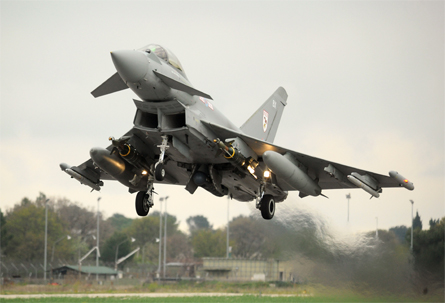
From Robert Wall, Aviation Week: Although much of the focus of Libya strike operations has been on platforms such as the Tornado GR4, Eurofighter Typhoon and Dassault Rafale fighters, one lesson emerging from the conflict is the need to have a low-cost aircraft to support such prolonged operations.
“We need to think about the need for the future for a low-cost platform to be able to do our job, if required, in a permissive environment,” argues Brig. Gen. Silvano Frigerio, deputy chief of air and space plans in the Italian air force and chief of the targeting directorate for NATO’s Libya operations.
“If we don’t have a composite fleet with very high technology and maybe lesser technology aircraft, how can we manage to fly thousands and thousands of flying hours on a joint operation area looking for one armored vehicle with the sophisticated aircraft we will have in the future? Maybe we can’t afford to stay there for such a long time,” he says. During the Libya operations, allies were worried about the cost of the duration of the conflict, he tells the International Quality and Productivity Center’s annual International Fighter Conference here.
Italy saw the difference firsthand when comparing the cost of operating a fully loaded AMX ground attack aircraft with other strike assets. (photo: Sgt. Pete Mobbs/Crown)
Image: crown%209%2022%2011%20British%20Typhoon.jpg
